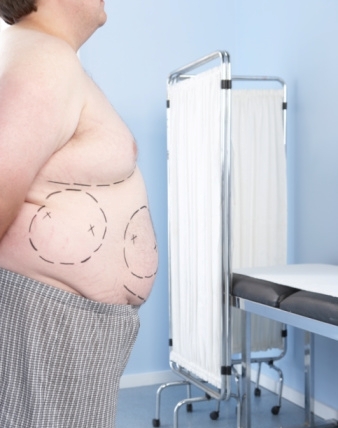Type 2 diabetes linked to esophageal cancer risk in Barrett’s esophagus patients
 Type 2 diabetes is linked to esophageal cancer risk in Barrett’s esophagus patients. In Barrett’s esophagus, the esophageal lining becomes similar to the stomach lining, and type 2 diabetes has long been linked to the condition. Lad researcher Prashanthi N. Thota said, “There has been a rising incidence of metabolic syndrome over the past decades, which seems to correlate with an increase in esophageal cancer.”
Type 2 diabetes is linked to esophageal cancer risk in Barrett’s esophagus patients. In Barrett’s esophagus, the esophageal lining becomes similar to the stomach lining, and type 2 diabetes has long been linked to the condition. Lad researcher Prashanthi N. Thota said, “There has been a rising incidence of metabolic syndrome over the past decades, which seems to correlate with an increase in esophageal cancer.”
Barrett’s esophagus develops when a person’s esophagus is unable to close tightly, which allows gastric acid to come up to the esophagus. When this occurs, the lining gets damaged and over time becomes similar to that of the stomach. Such changes in the esophagus can lead to dysplasia and even cancer.
The researchers looked at data from 1,632 patients with Barrett’s esophagus, of which 247 had type 2 diabetes. Researchers found that esophagus cancer was present in 15.8 percent of patients without type 2 diabetes and in 25.9 percent of diabetics. They also found high-grade dysplasia or cancer in 17.9 percent of diabetes patients, compared to 9.7 percent without diabetes.
Furthermore, the researchers found that 61.9 percent of patients with hypertension didn’t develop dysplasia. Thota added, “I suspect that this relates to the use of antihypertensive drugs rather than the condition per se.”
Previous research found that men with type 2 diabetes were at an increased risk for esophageal cancer, so recent findings confirm this link.
Type 2 diabetes may raise Barrett’s esophagus risk: Previous study
Previous research found that type 2 diabetes patients are at a greater risk for Barrett’s esophagus. Coinvestigator Prasad G. Iyer said that the study suggests “if you have diabetes, your risk for Barrett’s esophagus (BE) may be almost doubled.” The link may also be higher in men because men tend to carry greater weight and fat around the abdomen, whereas in it’s around the hips and thighs.
The researchers performed a population-based control study of 14, 245 Barrett’s esophagus cases and 70,361 controls without the condition. Those with Barrett’s esophagus were more likely to be smokers, consume alcohol, and have type 2 diabetes rates higher than the controls. The mean body mass index (BMI) was higher in Barrett’s esophagus patients, too, compared to the controls.
Obesity is a risk factor for Barrett’s esophagus and esophageal cancer, but the link is unclear.
Dr. Iyer explained, “Interestingly, we found that among the study cohort, if you had diabetes there was a twofold increase in your risk for Barrett’s esophagus. When we stratified the results by gender, the association of type 2 diabetes with Barrett’s esophagus was stronger in males compared to females, which may reflect the different fat distributions in men and women.”
Further research is required to better understand how type 2 diabetes leads to Barrett’s esophagus, but for now researchers strongly urge to maintain a healthy weight and lose weight if you are overweight as a means of lowering your risk of type 2 diabetes and Barrett’s esophagus.
Type 2 diabetes can be managed with walking aerobic exercises
Walking fights fat, boosts energy levels, and even protects your heart. But if you have type 2 diabetes, using interval walking as an aerobic exercise may be one of the best kinds of medicine. Results from a study published in Diabetes Care have shown that diabetics can improve their health and reduce healthcare costs by doing one simple physical activity. Continue reading…
-
Use These Tips To Shed Those Extra Pounds
Weight loss can make you happier with what you see in the mirror
-
Is There a Weight Loss Quick Fix?
Weight gain and loss requires time and is a true reflection of life
-
What are the Alternatives to Xenical Weight Loss Pills?
In an age of medical break-through, can
-
Early Warning Signs Of Global Warming
Global temperature in 2003 was the hottest in the historical record,
-
Health And Fitness Tips Website
Today the scenario is such that each one of us has to stay healthy and
-
What is brown fat? How is it different from other body fat?
Brown fat, also called brown adipose tissue, is a special type of body
- DON'T MISS
- Mommy Fat Loss Tips You Should Try
- Stories Of Weight Loss Challenge
- Best Minerals for Weight Loss
- Its All About You And Your Weight
- Don't Take Slimming Products With Undeclared Drug Ingredient
- Looking Great Didnt Make Me Happy, But Gaining Weight Did
- 5 Bodyweight exercises that burn fat
- Natural Diet and Lifestyle Reverse the Effects of Aging
- Tell Me Do You Really Like Being Fat
- The Beauty of Living a Grateful Life




